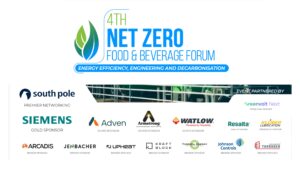The transition away from fossil fuels is driving urgent demand for clean, low-carbon energy sources. Hydrogen has major potential as a renewable, universal fuel. It can displace hydrocarbon use. This is across transportation, power generation, heating, and industry. When produced via electrolysis powered by renewable electricity, hydrogen results in no carbon emissions when utilized. However, substantial infrastructure limitations pose a barrier to scaled hydrogen infrastructure.
It is to affordable and reliable hydrogen delivery at a massive scale. Due to its low volumetric density, hydrogen is costly to compress and transport in large quantities. Ammonia, which is composed of one nitrogen and three hydrogen atoms, is gaining significant interest. This is an efficient medium to transport hydrogen.
Ammonia provides over 50% higher hydrogen density by volume compared to liquid hydrogen. Moreover, robust infrastructure already exists globally. This is to store, handle, and transport ammonia for agricultural uses. This article analyzes the properties that make ammonia an ideal hydrogen carrier and reviews demonstration projects. It also assesses infrastructure requirements, evaluates challenges, and examines the outlook for ammonia-enabled hydrogen networks worldwide. So, let’s get started.
Scaled Hydrogen Infrastructure: Advantages of Ammonia for Storing/ Transporting
Ammonia has several useful characteristics. These make it well-suited for effectively storing and transporting large volumes of hydrogen. So, let us look at the role of ammonia in hydrogen economy:
Higher Hydrogen Density
The foremost benefit of ammonia is its significantly higher hydrogen density compared to pure hydrogen. At room temperature and ambient pressure, hydrogen gas has a very low density.
Liquid hydrogen at -253°C increases density but still contains only 70kg of hydrogen per cubic meter. So, chilled liquid ammonia at -33°C can store 127kg of hydrogen per cubic meter, over 50% more than liquid hydrogen.
This higher volumetric density allows the transport of greater hydrogen capacity using smaller tanks and pipelines. It also reduces the costs associated with compression or liquefaction. It is required for hydrogen gas or liquid hydrogen. Overall, using ammonia can decrease the scaled hydrogen infrastructure requirements for moving equivalent hydrogen volumes by around 60%.
Existing Global Distribution Networks
Another major advantage of ammonia is the existence of extensive global infrastructure for transportation and distribution. Over 180 million tons of ammonia are transported annually for agriculture and industrial applications.
This comprises international shipping fleets and well-established networks. This is of storage tanks, pipelines, railcars, and trucks to move ammonia worldwide. Converting parts of this infrastructure to also deliver ammonia as an energy carrier can avoid the major costs. It can also avoid the complexity of building dedicated hydrogen networks.
Seaborne routes and maritime ports enable international ammonia transport. Meanwhile, trucks can distribute locally from storage hubs. Furthermore, pipelines connect major agricultural ammonia production plants. However, they may need augmentation in places for energy use. The presence of trained personnel and emergency response capabilities also aids ammonia’s use as a hydrogen vector.
Safer Handling Compared to Hydrogen
Ammonia has safer handling properties compared to hydrogen gas or liquid hydrogen. Although toxic at high concentrations, ammonia is easier to store and transport safely.
Ammonia remains liquid at reasonable pressures of 10-15 bar. As a result, it allows simpler storage as a liquid in validated tanks and more convenient pumping. It has a far lower flammability risk compared to hydrogen gas. It also does not require the complex insulation and design precautions needed for cryogenic liquid hydrogen.
Extensive regulations and operational procedures already govern agricultural ammonia networks worldwide. These represent industry best practices. These can be adopted for ammonia fuel systems with some modifications. Overall, ammonia is less prone to accidental release or combustion events. This is during transport and storage than pure hydrogen.
Dual-Use Flexibility
Ammonia’s dual usability, both as direct fuel and convertible hydrogen carrier, enhances its value proposition as an energy vector.
When needed, ammonia can be fed directly to combustion generators, gas turbines, or marine engine systems as a fuel to produce power. With appropriate engine configuration and emissions control systems, it can burn effectively.
Alternatively, ammonia can be “cracked” back into pure hydrogen gas. It can be done via catalytic converters for use in fuel cells or other hydrogen applications. This dual-use flexibility in ammonia provides optionality across more end-use cases without the need for customer retrofitting. These are some of the many role of ammonia in hydrogen economy.
Global Demonstration Programs Validate Ammonia’s Viability
To demonstrate ammonia’s real-world viability as a renewable hydrogen carrier, several pilot projects and test cases have successfully shown ammonia production, transportation, storage, use, and conversion across the supply chain.
Ammonia Production Plants
Thyssenkrupp initiated Europe’s first proprietary electrolyzer-based green ammonia production plant in 2020. Air Products has demonstrated modular hydrogen production integrated with ammonia synthesis. Moreover, production costs are falling as electrolyzers become more efficient and renewable electricity prices decline.
Ammonia Power Generation
Ammonia’s direct combustion has been proven in electricity generation. MAN Energy Solutions operated a turbine on a 75% ammonia fuel mix producing 2 MW power in 2020. Furthermore, in 2021, Siemens Energy ignited a 3 MW gas turbine using 100% ammonia fuel, showing hydrogen ammonia’s utility to replace natural gas.
Ammonia Engine Fueling
In maritime transportation, ammonia has been successfully tested as a marine engine fuel. In 2021, Wartsila combusted ammonia in a modified medium-speed 4-stroke engine. Additionally, MAN Energy is developing dual-fuel ammonia engines for future deep-sea vessels.
Export and Import of Ammonia-Based Fuel
The import and export of ammonia-based fuel at scale has been demonstrated. In 2020, the first pilot project shipped 40 tons of ammonia from Saudi Arabia to Japan as direct hydrogen fuel. So, this established the feasibility of long-distance ammonia transport and utilization.
Integrated Ammonia Infrastructure
Holistic test cases of integrated ammonia infrastructure have validated potential end-to-end systems. The Hytropy demonstration project in the Orkney Islands directly converted curtailed wind electricity to hydrogen and ammonia fuel. This is using electrolysis, liquefaction, and storage.
Modularized Production
Haldor Topsoe has successfully developed integrated modular ammonia synthesis plants. These directly coupled on-site hydrogen production from water electrolysis with renewable energy. It also enables automated production at a small scale, reducing risks.
Ammonia Cracking to Hydrogen
Catalytic systems have proven the decomposition of ammonia back to hydrogen gas. NEL’s facility in Norway integrates a high-efficiency ammonia cracker. This is with a hydrogen refueling station, using hydrogen ammonia as a storage medium. Moreover, EPC tested a durable 37% nickel cracking catalyst formulation.
Fuel Cell Usage
Cracked ammonia-derived hydrogen gas has been successfully used to power fuel cells. Toyota tested ammonia in its Mirai vehicle fuel-cell system. Moreover, universities in Belgium and Sweden have run solid-oxide fuel cells directly on ammonia without pre-cracking.
Scaled Hydrogen Infrastructure: Key Elements Essential for Scaled Deployment
While small-scale demos prove feasibility, reaching widespread ammonia-hydrogen networks requires substantial scaled hydrogen infrastructure development and investment.
Ammonia Production Plants
To synthesize ammonia at the required volumes, one needs large-scale centralized facilities. They should combine nitrogen and hydrogen. These facilities can integrate with dedicated renewable electricity sources. It includes offshore wind farms, to produce green ammonia output.
Massive 20+ GW scale world-class production plants, like Neom Helios which will be the world’s largest green hydrogen project, can create a competitive source. Smaller distributed plants with capacities of 100-500 tons per day can also decentralize the supply and expand incrementally.
Improving modularized synthesis reactors tailored for smaller-scale ammonia production can support distributed manufacturing. So, both demand centers and resource-rich export regions will need to build production plants.
Export and Import Terminals
To meet the massive future demand, we must develop major port infrastructure. It will help to load and unload hydrogen ammonia as an energy carrier at scale. This includes large cryogenic refrigerated storage tanks sized potentially in the hundreds of thousands of tons.
Facilities must enable economical import/export between seaborne tankers, rail tank cars, trucks, and pipelines. Moreover, allocate space for tank farms at exporting production hubs and importing demand centers along with jetties.
Dedicated Pipelines
New dedicated ammonia pipelines will be essential for affordable bulk transport depending on geography. Constructing entirely new systems or repurposing natural gas pipelines are options under assessment. Additionally, pipelines can provide efficient point-to-point capacity between major hubs over land.
Distribution Networks
Localized distribution will rely heavily on trucking and some rail transportation from ammonia storage terminals to end-use points. Logistics firms will need to add cryogenic ammonia road tankers and railcars. Additional transload facilities and distribution infrastructure to handle ammonia delivery must be built.
Cracking Plants
Catalytic cracking plants require substantial investments to process ammonia back into hydrogen gas where needed. Efficient modular crackers customized for high-volume ammonia decomposition could accelerate deployment. So, both centralized and distributed small-scale crackers will be needed.
End-Use Infrastructure
Finally, constructing major infrastructure like hydrogen refueling stations, ammonia power generators, and refinery crackers is necessary. This is to utilize the delivered hydrogen or ammonia. For transportation, networks of distributed green ammonia cracking stations to refuel FCEVs will be critical. Furthermore, ammonia fuel handling systems are required at power stations. So, the industry needs crackers integrated with their hydrogen pipeline networks. Ports often represent a nexus point for end-use.
Also read: The rise of EaaS and its transformative sustainability potential
Scaled Hydrogen Infrastructure: Challenges to Scaled Implementation
To achieve a worldwide hydrogen carrier status for ammonia, we must still overcome some technological and economic hurdles to build out its scaled hydrogen infrastructure at the massive scale required.
High Production Costs
Currently, the most significant challenge is the prohibitive cost of producing green ammonia from renewable hydrogen. With present electrolyzer and renewable electricity prices, ammonia production can cost over $500 per ton. So, for competitiveness with hydrocarbon fuels, production costs must decline to around $100-200 per ton.
Experts project this is achievable through scaled-up installations, improving electrolyzer efficiency, and plummeting renewable energy costs in the coming decades. However, further technological improvements and financial mechanisms are vital near-term.
Limited Modular and Distributed Production
The lack of small, modular ammonia synthesis systems limits decentralized production options currently. This means hydrogen ammonia must often be remotely produced and transported to demand locations. The development of containerized or miniaturized reactors suitable for distributed manufacturing from local renewable resources could be an enabler.
Immature Cracking Technology
While demonstrated, ammonia decomposition into hydrogen adds cost and complexity. Outside laboratories, researchers have not optimized and scaled up cracker technology. So, we need efficient cracking at lower temperatures and pressures. It includes modular systems sized for refueling stations. Otherwise, direct ammonia use is preferable.
Competing Demand for Ammonia
Rising baseline demand for ammonia for agriculture and industrial applications could constrain supply available for energy markets. New dedicated renewable electricity and hydrogen capacity can be built to expand production as costs decrease. Moreover, companies could repurpose previously stranded assets like gas pipelines in declining locations.
New Regulations Needed
Large investments require updated standards and regulations specifically covering ammonia as an energy carrier to provide certainty. These include safety codes, transportation guidelines, storage tank requirements, import/export procedures, and environmental regulations. Moreover, international coordination is essential for global infrastructure.
Public Perception Issues
Due to its toxicity, ammonia raises public perception issues. Extensive education and communication regarding its strong safety record in agriculture and stringent procedures will be vital. This is to gain the social license to operate ammonia energy systems alongside communities. So, robust safety practices must be implemented.
Scaled Hydrogen Infrastructure: Global Progress and Trajectory
Many nations have recognized ammonia’s immense potential and are proactively developing projects and policies. This is to capitalize on ammonia-based hydrogen networks.
Japan’s Ambitious Hydrogen Economy Roadmap
Japan is targeting ammonia to fulfill its goal of making hydrogen 20-30% of its energy mix by 2050 under its Hydrogen Basic Strategy. This could require nearly 300 million tons of imported ammonia annually. Japan aims to establish a fully domestic supply chain. It spans ammonia-coal co-firing power, direct ammonia combustion plants, and distributed ammonia-hydrogen cracking stations.
Australia Leveraging Its Resources
Australia is creating plans to export massive amounts of ammonia produced domestically. This is by using its abundant land and renewable resources. The Australian government projects hydrogen exports could comprise 10% of its energy exports by 2050. Firms like Fortescue Metals Group, ENEROX, and others are proposing several enormous green ammonia production plants. Each of them exceeds 15 GW.
United States Hydrogen Hubs
The US Department of Energy has funded several projects studying synthetic ammonia production and transport. Ammonia serves as an affordable means of transporting hydrogen. This is from heartland production regions to coastal demand centers. So, developers could establish integrated ammonia cracking hubs, capitalizing on existing pipeline networks from agriculture. Moreover, projects blending ammonia in coal plants demonstrate its decarbonization potential.
Saudi Arabian Export Capacity Building
Saudi Arabia is aggressively developing capabilities to produce and export huge volumes of green ammonia. This is from its vast solar, wind, and nuclear resources. Neom’s $5 billion Helios 10GW hydrogen and ammonia plant will be the largest in the world. Additionally, the Saudi Green Initiative aims to invest over $30 billion in hydrogen and ammonia projects for export by 2030.
European Union Coordination
The European Union regards ammonia as a critical future renewable energy vector. It is funding efforts by firms like Siemens Energy, EPC, and ThyssenKrupp. This is to improve ammonia synthesis reactors and cracking systems. Coordinated infrastructure planning for shipping, storage, and transport across the region is underway to integrate growing offshore wind supplies.
Cost Declines Expected
Experts anticipate ammonia prices can fall approximately 50-75% by 2050 as technology matures and production scales up. This would make ammonia or scaled hydrogen infrastructure competitive with hydrocarbon fuel supply chains. Moreover, mass adoption projects cost to reach $100-200 per ton of renewable hydrogen carried via ammonia.
Infrastructure Ramp-Up Underway
Global ammonia trade for energy uses alone could plausibly reach 15-30 million tons annually by 2030. It can also exceed 100-150 million tons by 2050. This would be sufficient to make hydrogen a major global energy carrier. While ambitious, this scaled hydrogen infrastructure rollout is achievable with dedicated policies, coordination between industries and governments, and continued investment.
Conclusion
Ammonia provides a proven, practical mechanism to store and transport hydrogen at scale as a clean fuel critical to decarbonizing the world’s economies. Pilot projects demonstrate ammonia’s end-to-end viability as a hydrogen vector. Although work remains to optimize production and cracking technology and construct infrastructure, ammonia-enabled hydrogen networks offer an achievable pathway. This is to affordably distribute hydrogen worldwide.
Dozens of ambitious government and corporate initiatives are already underway globally to leverage ammonia’s advantages. As costs decline and investments ramp up, ammonia infrastructure could rapidly grow over the next decades. This is to supply steady, heavy volumes of hydrogen across regions. Ammonia critically unlocks the promise of a hydrogen-based clean energy future.
The upcoming Net Zero Energy Sourcing & Power Purchase Agreements conference in Berlin, Germany from February 29th to March 1st, 2024 will delve deeply into the crucial role of ammonia and other technologies in building scaled hydrogen infrastructure. Industry experts will provide key insights into projects, applications driving hydrogen demand, infrastructure development, cost reductions, and innovative technologies enabling ammonia’s worldwide growth as the preeminent hydrogen carrier. Attending the conference will allow stakeholders across the energy, transportation, and industrial sectors to gain a strategic understanding of the accelerating development of global ammonia-hydrogen networks.



